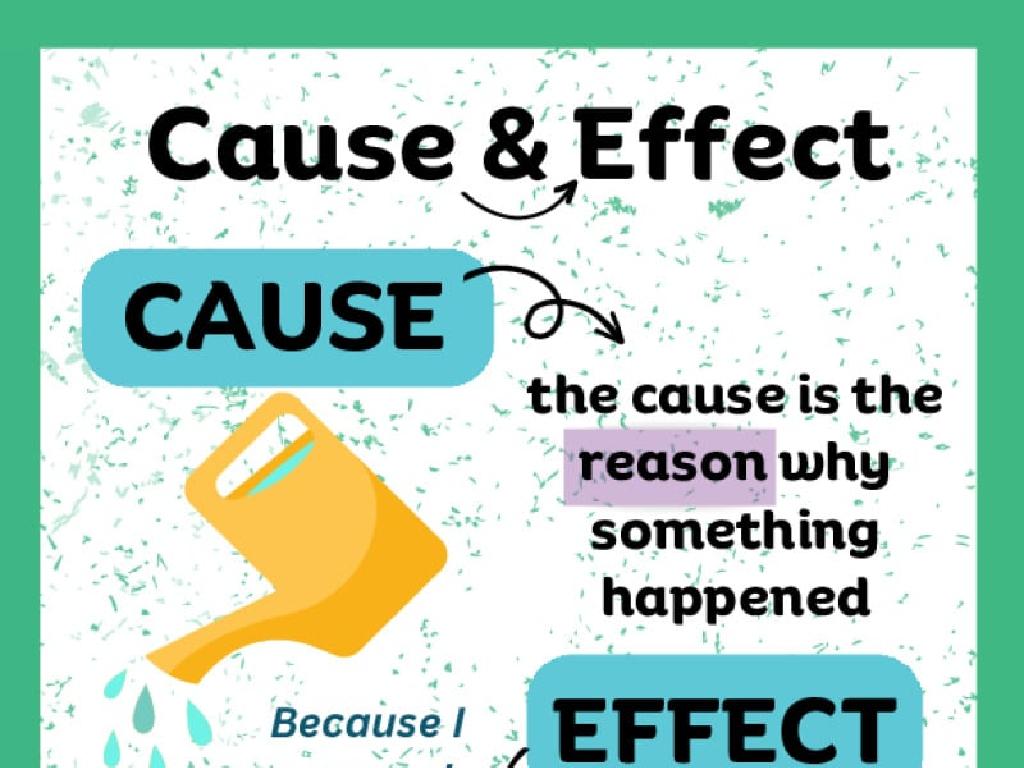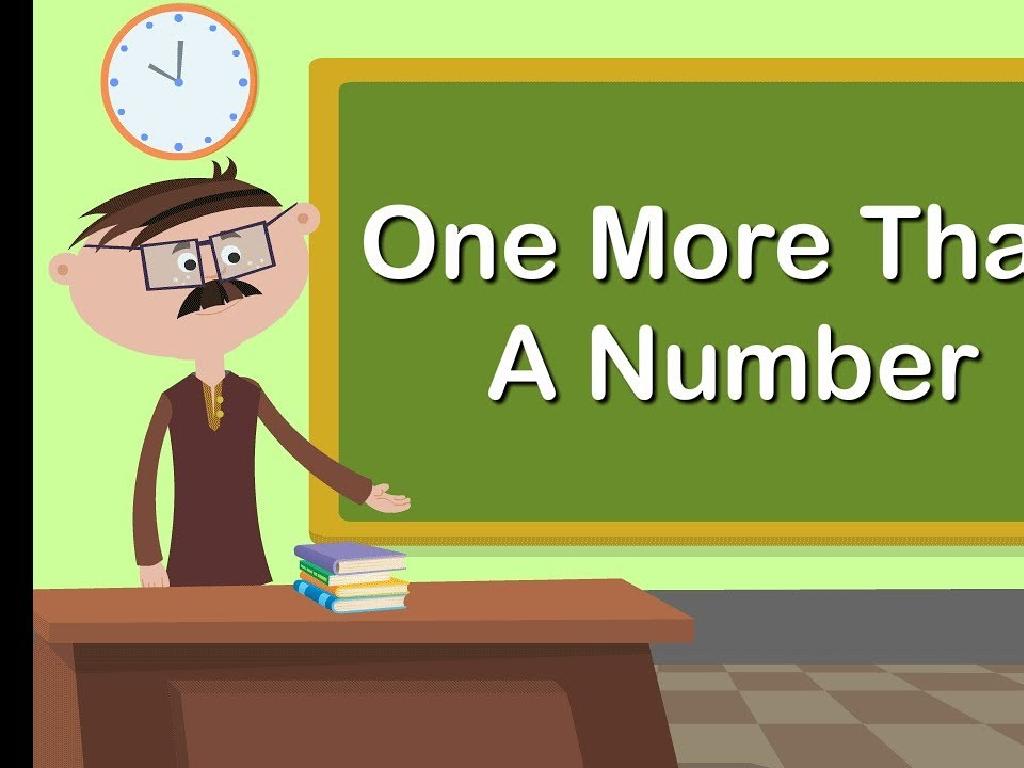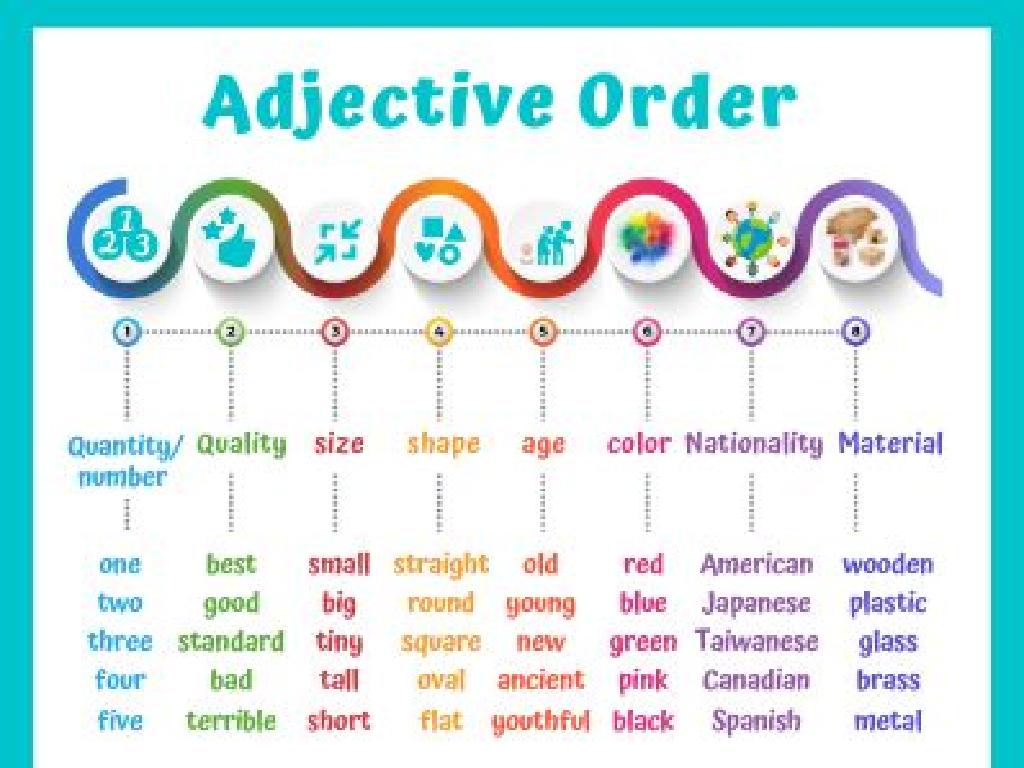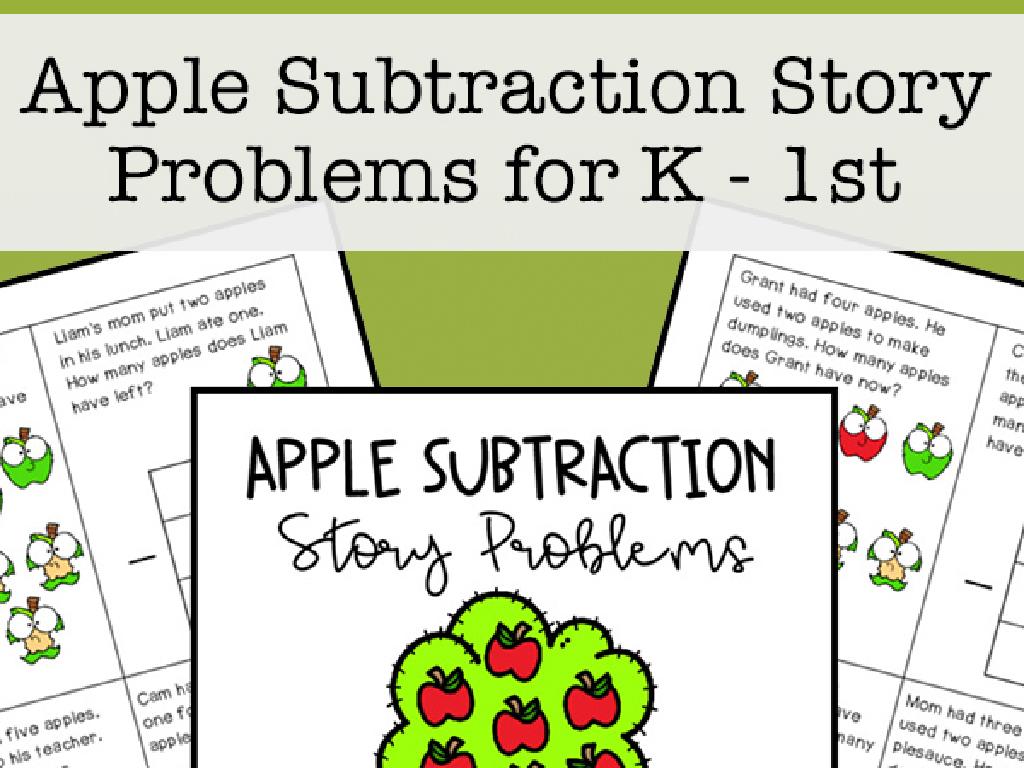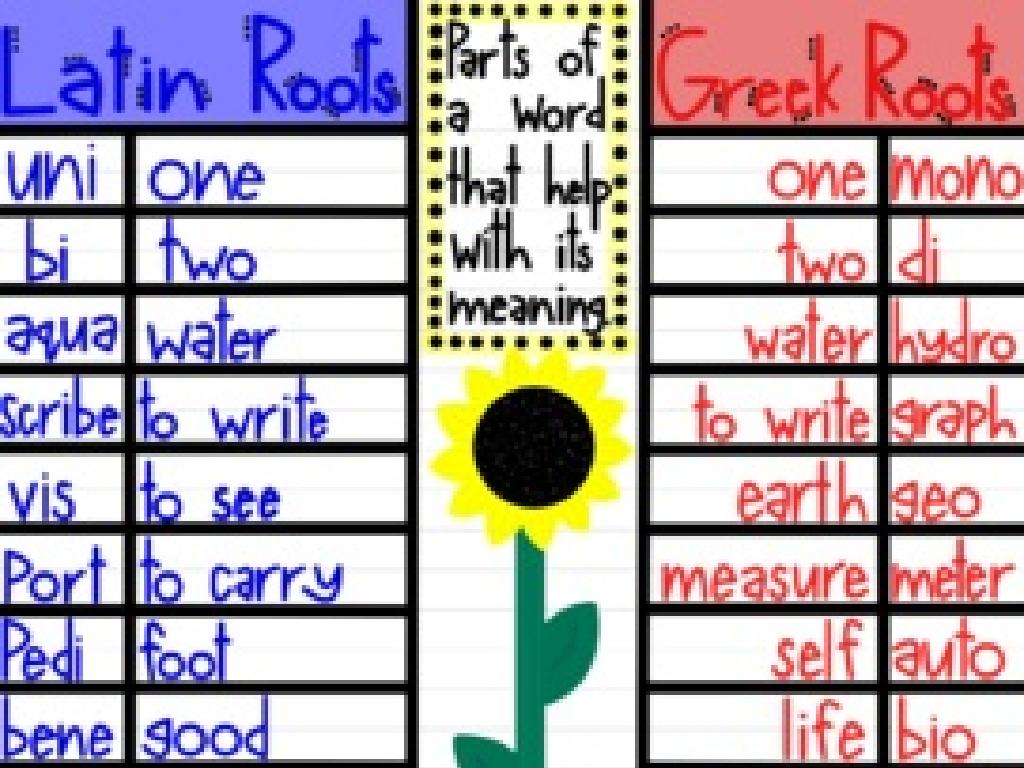Match The -Ed And -Ing Sentences To The Pictures
Subject: Language arts
Grade: Third grade
Topic: Verb Tense
Please LOG IN to download the presentation. Access is available to registered users only.
View More Content
Exploring Verb Tenses: -ed vs. -ing
– Understanding verb tenses
– Verb tenses tell us when an action happens
– Learn about -ed and -ing endings
– ‘-ed’ often means past, ‘-ing’ means it’s happening now
– Discover why verbs change form
– Verbs change to match the time of the action
– Matching verbs to pictures
– We’ll practice by linking verbs to the correct pictures
|
This slide introduces the concept of verb tenses to third-grade students, focusing on the -ed and -ing endings. Begin by explaining that verb tenses indicate the timing of an action, whether it’s in the past, present, or future. Highlight the use of -ed to denote past actions and -ing for actions happening currently. Discuss the importance of verbs changing form to match the time they refer to, which helps the listener or reader understand when the action is taking place. To reinforce learning, engage students in an activity where they match sentences using -ed and -ing verbs to appropriate pictures, enhancing their understanding of verb tenses in a fun and interactive way.
Action Words in Action!
– Verbs show actions or states
– See verbs in real-life pictures
– A picture of a running dog shows ‘running’
– Find verbs in example sentences
– ‘The cat slept peacefully’ – ‘slept’ is the verb
– Match verbs with correct pictures
– Connect ‘slept’ with a picture of a sleeping cat
|
This slide introduces the concept of verbs as action words to the students. Begin by explaining that verbs are words that show what someone or something is doing or feeling. Show pictures that depict different actions and ask students to identify the verbs. Provide sentences and have students find and underline the verbs. Then, engage the students in a matching activity where they match sentences containing verbs in the -ed (past) and -ing (present participle) form to corresponding pictures. This will help them understand verb tenses and how they relate to actions. For the activity, prepare a set of pictures and sentences on flashcards to distribute among the students for a hands-on experience.
Understanding the -ed Ending
– The -ed ending shows past action
– When we see -ed, it means the action is already done
– Examples: ‘jumped’, ‘hugged’, ‘asked’
– ‘She jumped high’, ‘They hugged tightly’, ‘He asked a question’
– Practice finding -ed verbs
– Look at sentences and find verbs that end in -ed
– Match -ed verbs to pictures
– Connect past actions in sentences to the correct images
|
This slide introduces the concept of the -ed ending to indicate past tense verbs. Start by explaining that when we add -ed to a verb, it tells us the action has already happened. Give clear examples using simple verbs that the students are familiar with. For the practice activity, provide sentences and have students identify the verbs with the -ed ending. Then, move on to an interactive matching activity where students will link sentences containing -ed verbs to corresponding pictures, reinforcing their understanding of past tense verbs. Encourage students to explain why they matched each sentence to each picture to ensure comprehension.
Understanding the -ing Ending
– ‘-ing’ shows action is current
– Examples: ‘jumping’, ‘hugging’
– Words like ‘jumping’ mean someone is in the middle of a jump now
– Find ‘-ing’ verbs in sentences
– Look for words in sentences that end with ‘-ing’ and show action
– Match sentences to pictures
– Use pictures to connect the action with the ‘-ing’ word
|
This slide introduces the concept of the ‘-ing’ verb ending, which indicates that an action is happening at the moment. Start by explaining that when a verb ends in ‘-ing’, it means the subject is currently doing something. Show examples like ‘jumping’ and ‘hugging’ to illustrate this point. For practice, have students find verbs with the ‘-ing’ ending in provided sentences. Then, as an engaging activity, ask them to match these sentences to corresponding pictures, reinforcing the concept that ‘-ing’ denotes ongoing action. This will help students visually connect the words to actions, enhancing their understanding of present continuous tense.
Matching -ed and -ing Sentences to Pictures
– Understanding -ed and -ing endings
– Sentences with -ed show actions that are finished. Sentences with -ing show actions happening now.
– Determine the action’s time
– Look at the picture: Did the action already happen (past) or is it happening now (present)?
– Match -ed sentences to past actions
– Find pictures showing completed actions and match them with sentences that end in -ed.
– Match -ing sentences to ongoing actions
– Find pictures showing actions in progress and match them with sentences that end in -ing.
|
This slide is aimed at helping third-grade students understand the concept of verb tenses, specifically the past (-ed) and present continuous (-ing) forms. Begin by explaining that verbs can show when an action happens. The -ed ending is used for actions that have already happened, while the -ing ending is for actions that are currently happening. Show students a variety of pictures and ask them to describe what they see using both -ed and -ing verbs. Then, have them practice matching sentences to the correct pictures based on the tense. Encourage students to explain their reasoning for each match to reinforce their understanding of verb tenses.
Let’s Practice Together: Matching Verb Tenses
– Class activity with sentence-picture matching
– Work in groups to match sentences
– Share your matches with the class
– Discuss why the matches are correct
– Explain your thinking: why does the sentence match the picture?
|
This slide introduces an interactive class activity focused on matching sentences that contain -ed and -ing verbs to corresponding pictures. Begin by demonstrating the activity with a few examples on the board. Then, have students form small groups to work on matching sentences to pictures provided in handouts. Encourage collaboration and discussion within the groups. After the group work, invite each group to share their matches with the class and discuss the reasoning behind their choices. This will help reinforce their understanding of verb tenses in a practical context. As a teacher, facilitate the discussion by asking guiding questions and providing feedback. Possible activities: 1) Matching sentences to pictures on worksheets, 2) Creating a gallery walk with pictures around the room, 3) Drawing their own pictures to match with given sentences, 4) Acting out the sentences while others guess the matching picture.
Create Your Own -ed and -ing Sentences
– Write sentences using -ed and -ing
– Think of actions for past (-ed) and ongoing (-ing)
– Draw a matching picture for each
– Your drawings should show the action in your sentences
– Be creative with your sentences
– Use your imagination for fun and interesting sentences
– Get ready to present to the class
|
This activity is designed to help students understand the difference between past tense (-ed) and present participle (-ing) in a fun and interactive way. Encourage them to think of verbs and create sentences that reflect actions already completed for -ed, and actions that are in progress for -ing. They should then draw a picture that represents the action in their sentences. This will help them visualize verb tenses and reinforce their learning. When sharing with the class, prompt students to explain why they chose the tense they did and how their picture reflects the sentence. This will also enhance their public speaking and reasoning skills.
Class Activity: Verb Tense Illustration
– Choose a verb for your pictures
– Draw two scenes: -ed and -ing
– One picture shows a completed action (-ed), the other an ongoing action (-ing)
– Write sentences for each scene
– Make sure your sentences match the actions in your drawings
– Present your artwork to the class
|
This activity is designed to help students understand the difference between past tense (-ed) and present participle (-ing) in a fun and creative way. Students will select a verb, such as ‘jump’, and create two distinct pictures. One picture might show a person who has jumped over a puddle (jumped), and the other could depict someone in the middle of jumping (jumping). They will then write a sentence for each picture, such as ‘He jumped over the puddle’ and ‘He is jumping over the puddle.’ After completing their drawings and sentences, each student will have the opportunity to present their work to the class, explaining the verb tenses they’ve used. For the teacher: Prepare to facilitate the activity by providing drawing materials and helping students brainstorm verbs. Encourage students to think creatively and ensure they understand the concept of completed and ongoing actions. You can also prepare a few examples to show before the activity starts.

